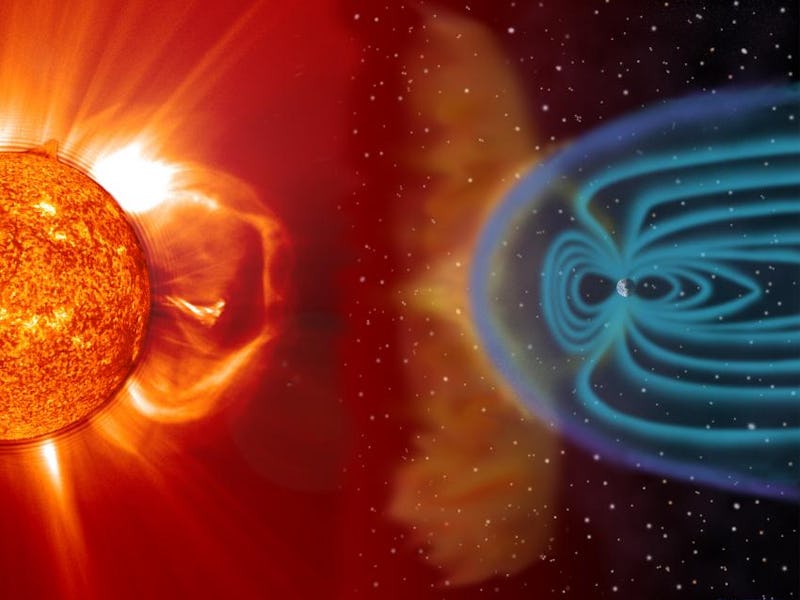What will happen after Earth is destroyed by the Sun? A possibility for new life
As long as a white dwarf star is alive, life will likely not survive.

On Earth, the Sun is our lifeline. When the planet’s host star dies, all life on Earth will likely be destroyed.
But that may not be the end of life in the Solar System.
A new study suggests that following the death of a white dwarf star, a new form of life may unexpectedly take shape on the planets that orbit it. The new findings not only have implications for what kind of life may emerge around the Sun after the Earth is long gone but could also help astronomers in their search for life on distant worlds.
The findings are detailed in a paper published Wednesday in the Monthly Notices of the Royal Astronomical Society.
The white dwarf star dubbed Sirius B (bottom left) is smaller than Earth, but much denser with a gravitational field 350,000 times greater than that of the planet’s.
Here’s the background — After a star like the Sun runs out of fuel, it withers down to a hot, dense core. The star will eject its outer material, leaving behind a white dwarf with temperatures reaching 100,000 Kelvin. The white dwarf star will cool down over a billion years and last several billion years before becoming a black dwarf.
White dwarfs have masses similar to that of the Sun in an Earth-sized body. A white dwarf star is typically 200,000 times as dense as the Earth.
WHAT’S NEW — The researchers predict that as the Sun runs out of hydrogen, the main burning fuel for stars, it will likely swallow up nearby planets, possibly including the Earth, as it stretches to tens of millions of kilometers in diameter.
The Sun’s stellar winds will also intensify in density and speed. During that time, for a planet to maintain its magnetosphere, it would have to have a magnetic field at least 100 times stronger than Jupiter’s.
The new research suggests that without a magnetosphere, life will be boiled away.
“We know that the solar wind in the past eroded the Martian atmosphere, which, unlike Earth, does not have a large-scale magnetosphere,” Aline Vidotto, a professor at Trinity College Dublin and co-author of the study, said in a statement. “What we were not expecting to find is that the solar wind in the future could be as damaging even to those planets that are protected by a magnetic field.”
Digging into the details — Though the phases before the Sun becomes a white dwarf will destroy the atmosphere of many of its planets, there’s still a possibility for life to start again.
During the red giant phase, the habitable zone will move toward the outer planets.
But once things start to calm down, the habitable zone around a white dwarf star after it starts to cool down is actually much closer since those types of stars tend to be rather dim. During that time, the star will not pose any further harm to the planets that actually managed to survive its raging death.
“White dwarfs are also very steady stars as they have no winds,” Dimitri Veras, an astrophysicist at the University of Warwick and lead author of the new study, said in a statement. “A planet that’s parked in the white dwarf habitable zone could remain there for billions of years, allowing time for life to develop provided that the conditions are suitable.”
So far, scientists have not detected a habitable planet orbiting around a white dwarf star. But in September 2020, astronomers announced the discovery of a gas giant planet orbiting a white dwarf star after having survived its turbulent death.
The discovery shows that planets could potentially survive a star’s violent death and live to witness its white dwarf phase. If conditions were right, a world on the outer edges of its star system could migrate inward.
WHAT’S NEXT — The James Webb Space Telescope (JWST) is slated for an October launch and will peer at the atmospheres of exoplanets orbiting white dwarf stars.
Using JWST, astronomers will identify whether exoplanets orbiting the dead cores of stars like the Sun carry any biosignatures that indicate life or biomarkers that show possible habitability.
While white dwarf planets aren’t the likeliest place to find life, the new study raises the intriguing possibility that it’s out there.
Abstract: Accompanying the mounting detections of planets orbiting white dwarfs and giant stars are questions about their physical history and evolution, particularly regarding detectability of their atmospheres and potential for habitability. Here we determine how the size of planetary magnetospheres evolves over time from the end of the main sequence through to the white dwarf phase due to the violent winds of red giant and asymptotic giant branch stars. By using a semi-analytic prescription, we investigate the entire relevant phase space of planet type, planet orbit, and stellar host mass.